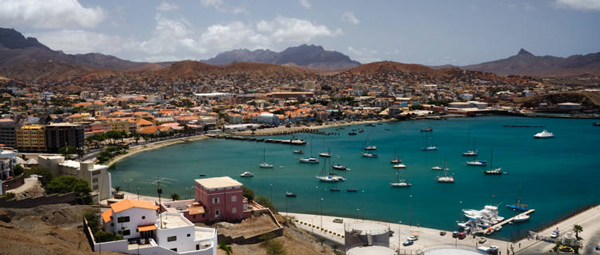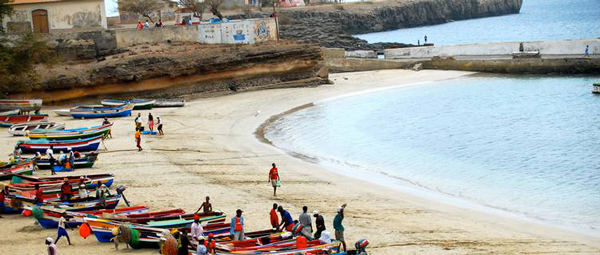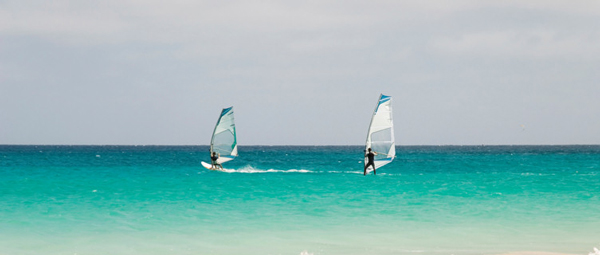Cape Verde Travel Guide, The islands of Cape Verde are a bewitching blend of Portuguese and African influences, as seen in the many European –style buildings dotted amongst the ever-changing landscape, the unique musical styles, and the fascinating mixture of African and European custom and conduct. It’s most obvious in the foods on offer, with Portuguese foods (such as fish- and seafood-based dishes, olive oil, garlic, lemon and sausage) and African foods (stews, beans, maize and tropical crops) comfortably combined on most menus.
Many visitors’ first impression of Cape Verde comes through the mournful songs of Cesaria Evoria, the island’s best known singer. The ‘barefoot diva’ is the best exponent of morna, a lovelorn type of folk music similar to Portuguese fado. Music is a key component of life on Cape Verde, and several islands stage exuberant carnivals, with the best known being the Baia das Gatas Festival.
Once a former colony and slave trade outpost, the ten islands and five tiny islets which make up Cape Verde vary wildly in character and scenery, from spectacular verdant mountain ranges, to deserted beaches, with a some volcanic landscapes thrown in for good measure. It’s this variety that makes Cape Verde such an unusual and appealing destination.

There’s lush and lively Santiago, the biggest of the islands at 991 sq km (383 sq miles) which, replete with lush green hillside is great for keen hikers eager to trek through jungle and spot some native wildlife. It’s also the cultural heart of Cape Verde, having been the primary location of the slave trade during its height, and is home to the UNESCO world heritage old fort site at Cidade Velha. Divers are in for a treat; here 16th century shipwrecks litter the sea floor and these are open to curious members of the public wanting to explore.
Alternatively, divers can head to the quiet islet of Boa Vista where there are numerous opportunities for scuba diving and snorkelling – look out for eels, yellowfin tuna and the odd humpback whale in the clear blue waters. The island of Sal is also popular for watersports such as windsurfing and sailing, but it’s the white sandy beaches that will appeal to those wanting to relax completely. The adventurous should hop on a boat to the island of Fogo, another hiker’s paradise, where volcanic peaks tower 2800m (9186 ft) above sea- level; make sure you take a guide.
There are also good markets on some of the islands. São Vicente’s is renowned for its exuberant Carnival, whilst the Baia das Gatas Festival is a more traditional affair but one that still has people boogieing until the early hours to Cape-Verdean rhythms.

Since achieving independence from Portugal in 1975, Cape Verde has struggled economically. Many might argue that Cape Verde’s isolation is a blessing, leaving these islands unspoiled and comparatively undiscovered; however, the government is focused on attracting tourists to the islands, and with the beauty of its scenery, friendliness of its people and its vibrant Creole culture, they should have no problem in succeeding.
Travel Advice
The travel advice summary below is provided by the Foreign and Commonwealth Office in the UK. ‘We’ refers to the Foreign and Commonwealth Office. For their full travel advice.
Crime
Crime rates in Cape Verde are low, but there has been an increase in muggings and burglaries including on the main tourist islands of Sal and Boavista. Avoid unlit areas after dark and be vigilant at all times. Leave valuables in a hotel safe if possible.
If you become a victim of crime, contact the local police. In an emergency call 132 (police) or 131 (fire). Response times vary and service standards may not be as high as in the UK.
Road travel
Traffic is usually light and road conditions and driving standards are generally of a reasonable quality.
The rainy season in Cape Verde is from mid August to mid October. Torrential rains can cause floods and landslides. Monitor local weather reports and expect difficulties when travelling to affected areas during this season.
Sea travel
Sea conditions around Cape Verde are sometimes dangerous. Mariners should take local advice. Travel by sea to the southern islands of Fogo and Brava in particular can be disrupted.
Take care if you participate in water sports, swimming, boating and fishing. Tides and currents around the islands are very strong.
Political situation
The political situation is generally stable.



One Comment